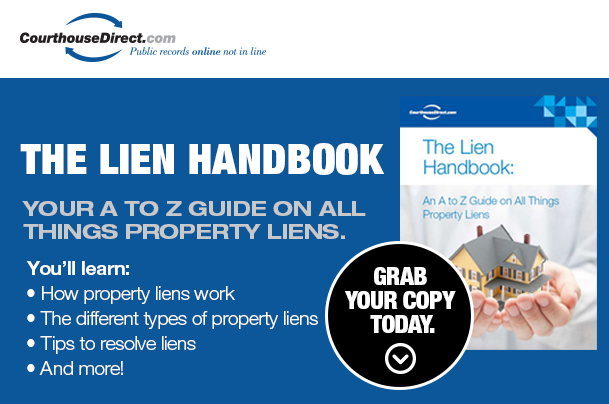
Robert Frost wrote, “Good fences make good neighbors." Hopefully, that means if the poet next door placed the fence two inches onto Mr. Frost's property, the neighbor took possession by acquiescence. Otherwise, a legal dispute would have ensued, and they would no longer be good neighbors, regardless (or maybe especially) because of that fence.
Buying or selling property often uncovers boundary encroachments. Without a way to transfer small slivers of land to the adjoining plot, transferring or deeding the land would be difficult if not impossible.
Acquiescence is one method of establishing or re-establishing a boundary line different from the one shown in the title deed. Since property disputes are relatively common, it’s nice to know there are other ways of settling them than adverse possession.
Defining Acquiescence
The legal doctrine of practical location is used to establish the new location of a property boundary. It can be used whether or not the boundary exists or can be agreed upon. Most of the time, the doctrine is used to change the boundary line from what is shown on a valid, accurate survey.
Boundaries are established in one of three ways.
- Estoppel - one party, which knows the correct boundary line location, looks on “in silence” while the other party encroaches on the boundary or pays a penalty that could have been avoided if the line had been disputed.
- Agreement - both parties agree on the boundary line and acquiesce to the agreement.
- Acquiescence - one party allows the boundary to be encroached upon for long enough to bar the right of entry under a statute of limitations.
Put simply, acquiescence legally determines the boundary between two properties, overruling the boundary shown or listed in the deed. After acquiescence, one property owner loses the title to some land while the other owner gains the title to that land.
Much of the law surrounding acquiescence differs from state to state in its particulars. States may create a restriction through a statute of limitations before acquiescence can be applied, or the court may make the final decision of the boundary line regardless of what the landowners say.
For example, in Utah, the state supreme court ruled that proof of ownership by both landowners is not required for establishing a boundary line through acquiescence. The court decision was in response to the state’s failure to separate acquiescence from agreement.
The court held that an owner can acquire property by acquiescence if the owner occupies part (usually a strip) of a neighbor’s land “in a visible manner” without objection. More specifically, the case of Anderson v. Fautin caused Utah to develop the required elements for acquiescence.
- Occupation up to a visible line marked by a fence, building, or monument.
- Mutual acquiescence that the marked line is the boundary.
- The new boundary remains in place without dispute for 20 years (the statute of limitations) by the adjoining landowners.
Landowners have one incentive for settling a boundary dispute by acquiescence. Utah imposes property taxes on the encroaching landowner if the boundary is shifted through adverse possession. The tax is not imposed if the boundary moves through acquiescence.
When Does Acquiescence Apply?
Boundary issues, as noted before, often come up during a land sale or when a boundary survey has been performed for some reason. The question of acquiescence comes about when the boundary observed by the landowners for a long time is different from the deed.
Acquiescence requires two property owners and a mistake. Both are mistaken about where the real boundary lies. However, the error is mutual, not the result of hostile action. Three situations apply to acquiescence in most states.
- There is a dispute, then an agreement.
- Acquiescence occurs after a statutory period.
- It arises from the intention to deed to a boundary line.
The final situation means a property owner intends to deed the property with the boundary line but uses an incorrect description. Acquiescence to the intended boundary fixes the error.
Acquiescence can be challenging to prove for title purposes but not as challenging as adverse possession.
In Michigan, the legal standard for what the plaintiff must prove is evidence in their favor by a “preponderance of evidence,” or a bit over 50%. Adverse possession requires the evidence must be clearly and cogently in the plaintiff’s favor to gain the land.
Acquiescence vs. Adverse Possession
Adverse possession is another method of changing a boundary line, but it is considered to be a “hostile” action. Someone deliberately encroaches on the adjoining land without any agreement from the other party.
In Arkansas, for example, adverse possession only applies if it meets the requirements.
- The possession must be well-known or open and notorious.
- It must be exclusive, a private use not a public use.
- The possession must be hostile, done entirely without permission.
- It must be continuous for seven years.
In Ohio, the case of Golubski v. United States Plastic, LLC., highlights the difference between acquiescence and adverse possession.
United States Plastic, LLC, purchased land adjacent to Robert Golubski, who had been at his address since 1976, at a foreclosure sale and then tried to enforce the original boundaries. Unfortunately, for the past 15 years, Golubski maintained a ribbon of property 15 south of the actual line as if it was his property. Even though he had a survey performed in 2000 and learned the property was not part of his deeded land, he continued to maintain it.
When the owners of the property adjacent to Golubski died, the daughter did not object to Golubski’s use of the land and believed it was his. Later, she lost title through foreclosure, and United States Plastic became the owner.
United Plastic’s landscapers removed shrubbery on what Golubski thought was his property, so he filed suit to establish title through adverse possession or acquiescence. He prevailed, and the plastic company appealed to the district court.
The district court noted that acquisition by adverse possession would require proving exclusive possession that was open, notorious, continuous, and adverse for 21 years. However, permissive use does not allow for adverse possession to be used. The court said Golubski had implicit permission to maintain, mow, and grow a garden, none of which is adverse under Ohio law.
While Golubski was unable to prove adverse possession, he more than adequately made a case for acquiescence.
For acquiescence, the mistake is a well-known and accepted one that has been allowed to stand for an extended period. The dispute is always with the adjoining landowner and always about the boundary between the parcels.
In adverse possession, the property can be claimed by anyone. They don’t need to be a property owner or on land adjoining the property in dispute.
Procedures and Considerations
No matter the nature of the dispute, acquiescence must follow a pre-defined procedure.
- Two parties agree upon a mutually beneficial boundary line and physically mark it with a fence, road, or wall.
- The parties affirm the marker will serve as the boundary between the properties in perpetuity.
- In statutory acquiescence, passive landowner's consent is implied.
Acquiescence is like the sweet cousin to adverse possession. The boundary is shifted through mutual permission, even if passive.























